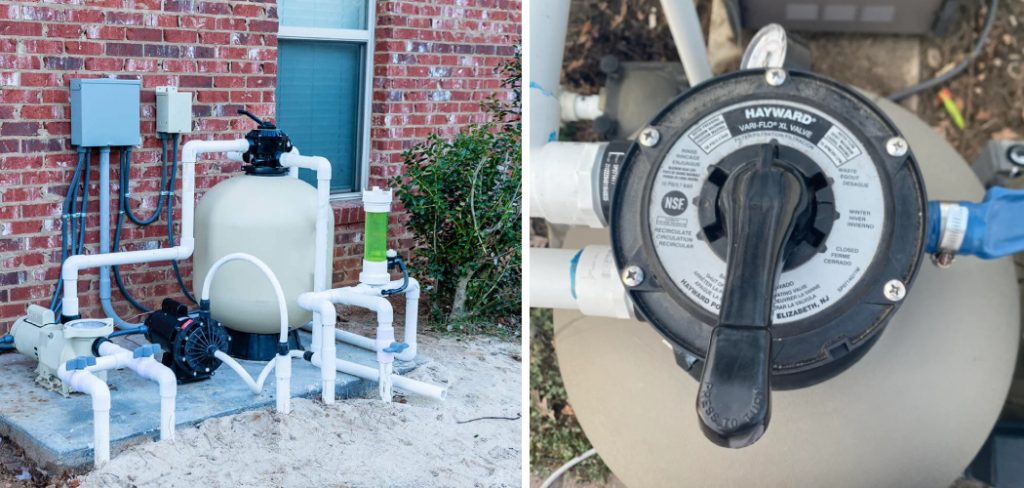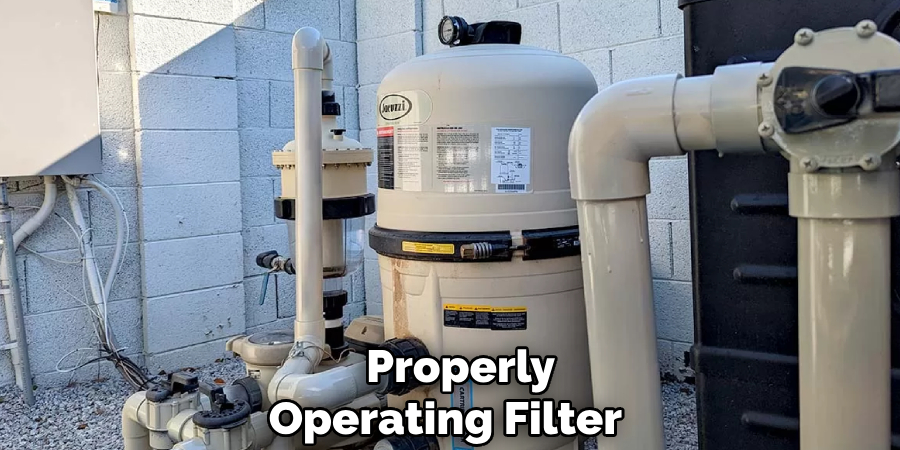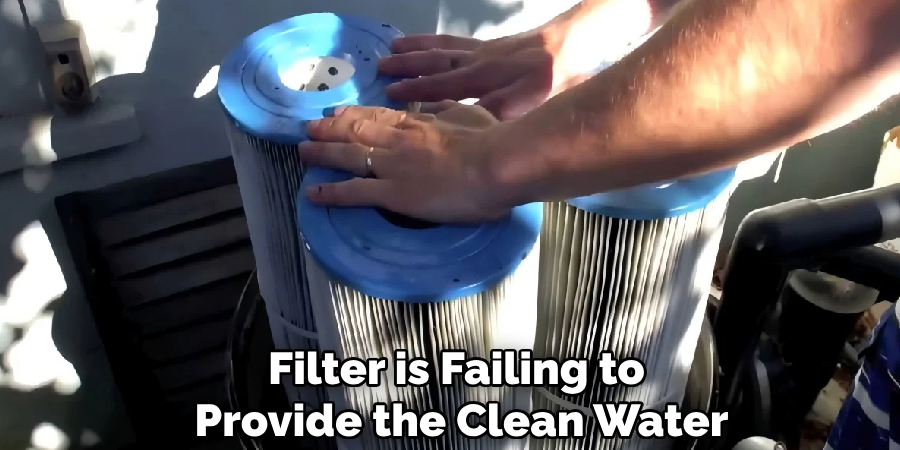Having a properly functioning pool filter is essential to maintaining clean and safe water in your swimming pool. The filter works to remove dirt, debris, and other contaminants, ensuring that your pool remains crystal clear and inviting. However, it’s not always easy to tell if your filter is working as it should. Understanding how to tell if pool filter is working can help in maintaining it properly and troubleshooting common issues that may arise over time.

Importance of a Functioning Pool Filter
A functioning pool filter is crucial for maintaining both the aesthetic appeal and the safety of your swimming pool. Without an efficient filter, contaminants such as dirt, leaves, bacteria, and algae can accumulate, leading to cloudy and unhygienic water. This not only detracts from the enjoyment of your pool but also poses potential health risks to swimmers, such as skin irritation, eye infections, or waterborne illnesses.
Additionally, a clean and properly filtered pool reduces the need for excessive chemical treatments, saving you time and money in the long run. By ensuring your pool filter is in good working condition, you can extend the life of your pool’s equipment, promote healthier swimming conditions, and enjoy a sparkling, well-maintained oasis.
The Role of the Pool Filter
The pool filter plays a critical role in maintaining water clarity and hygiene by removing impurities and debris from the water. It works by circulating pool water and trapping contaminants such as dirt, leaves, and microscopic particles that can cloud the water or foster the growth of harmful bacteria. Filters come in various types, including sand filters, cartridge filters, and diatomaceous earth (DE) filters, each with its advantages and maintenance requirements. By continuously filtering the water, the pool filter not only keeps the pool looking pristine but also ensures that the water remains safe and healthy for swimmers.
Proper maintenance of the pool filter, such as cleaning or replacing filter media regularly, is essential to optimize its performance and extend its lifespan.
10 Methods How to Tell if Pool Filter Is Working
1. Observe Water Clarity and Overall Cleanliness
One of the most immediate and visual indicators of a functioning pool filter is the clarity of the water. A properly operating filter should continuously remove fine particles, algae spores, and debris, leaving the pool water sparkling clear. If the water appears cloudy, dull, or has a greenish tint despite routine maintenance, it may suggest that the filter is not adequately removing contaminants. Regular observation of your pool’s water quality—especially after heavy use or storms—is a practical method to determine the effectiveness of your filter system. Clean, crystal-clear water is a strong sign that your filtration system is doing its job.

2. Check the Pressure Gauge for Normal Readings
Most pool filters, especially sand and cartridge models, are equipped with a pressure gauge that measures the internal pressure within the filter tank. Under normal operating conditions, this gauge should display a pressure between 10–20 psi, depending on your pool system’s specifications. When the pressure rises significantly (usually 8–10 psi above the clean baseline), it indicates the filter is dirty or clogged.
Conversely, an abnormally low pressure reading could signal a blockage in the intake line or a malfunctioning pump. Routinely checking this gauge gives you critical insights into how well your filter is functioning and whether it needs cleaning or servicing.
3. Monitor Flow Rate at Return Jets
Another straightforward method to tell if your pool filter is working is to feel the strength of water flowing back into the pool through the return jets. When the system is functioning properly, you should feel a steady, robust stream of water being pushed out. A noticeably weak flow could be a sign that the filter is clogged, the pump isn’t operating correctly, or air is trapped in the system. Conversely, a very strong or erratic flow could point to a bypass issue where unfiltered water is being circulated. Observing and comparing the return flow can help you assess the health of your filtration system.
4. Inspect Filter Media for Build-Up or Damage
The condition of the filter media—be it sand, cartridge, or diatomaceous earth (DE)—offers a direct indication of whether your pool filter is performing as it should. For sand filters, the sand should feel slightly gritty and free-flowing; if it’s clumped or greasy, it may need replacing. Cartridge filters should be rinsed and inspected regularly for debris accumulation or tears in the pleats. DE filters require periodic backwashing and recharging with new DE powder. If the media is heavily fouled or deteriorated, it will not effectively trap particles, and your pool water quality will suffer. Regular inspection ensures long-term efficiency.
5. Listen for Unusual Noises from the System
Pool filtration systems should operate with a consistent and relatively quiet hum. Any loud, irregular noises—such as grinding, screeching, or high-pitched whining—may indicate issues with the pump or air trapped in the filter tank. A noisy filter could be due to cavitation (caused by low water flow), worn-out bearings, or a malfunctioning impeller. Such noises are not only a nuisance but also an early warning that your filter system is under strain and not filtering as efficiently as it should. Timely investigation of unusual sounds can prevent more serious damage and filter failure.

6. Observe How Quickly Debris Clears After Cleaning
A working filter should clear up minor debris and cloudiness within a few hours of running, especially after vacuuming or shocking the pool. If, after manually cleaning the pool or adding chemicals, the debris or cloudiness persists for more than 12–24 hours, it suggests the filter is not cycling water effectively. A healthy filtration system should show noticeable improvements in water quality fairly quickly. Slow or negligible results after maintenance activities may indicate that the filter is either clogged, undersized, or nearing the end of its service life.
7. Test Water Chemistry for Imbalances
Although not a direct function of the filter, poor water chemistry can indirectly point to filter inefficiency. If your pool’s chlorine levels are constantly depleted, pH levels fluctuate wildly, or algae reappears shortly after treatment, it may mean the filter isn’t removing organic materials adequately. The buildup of microscopic debris, oils, and waste can interfere with sanitizer effectiveness. By testing the pool water regularly and identifying recurring chemical imbalances, you can determine whether the filter is failing to provide the clean water environment needed for stable chemistry.

8. Check for Visible Particles in the Water
Even if the water seems generally clear, a closer inspection might reveal suspended particles or floating debris that a properly working filter should capture. Use a pool light or flashlight at night to illuminate the water—this often reveals tiny particles that are otherwise invisible during the day. If these particles persist despite running the filter for several hours daily, it suggests the filter media isn’t trapping them effectively. Whether it’s because of worn-out cartridges, old sand, or clogged grids, persistent particulate matter is a strong indicator that filter performance is compromised.
9. Perform a Filter Cleaning or Backwashing and Compare Results
One of the most telling ways to assess if a pool filter is working is to perform a thorough cleaning—such as backwashing a sand or DE filter or rinsing a cartridge filter—and then closely observe the pool’s condition over the next day or two. If there’s a noticeable improvement in water clarity and jet pressure post-cleaning, it confirms that the filter was dirty and needed maintenance, and it’s now functioning more effectively. On the other hand, if there’s no improvement, the issue may be deeper, such as worn filter media, plumbing blockages, or a malfunctioning pump.
10. Track Filter Run Time and System Cycling Behavior
Lastly, keep an eye on how long the filtration system runs and whether it completes its daily cycles as programmed. Most pool filters need to run 6–12 hours daily, depending on pool size and usage. If the system shuts off prematurely or doesn’t run at all, the filter obviously isn’t working. This could be due to timer malfunctions, pump issues, or tripped breakers. Additionally, if the system runs continuously without improving water clarity, it could suggest that the filter is circulating water but not filtering it properly. Monitoring system behavior ensures the filter not only runs but runs effectively.

Conclusion
A pool filter enclosure ideas is essential for maintaining clean, safe, and inviting swimming water. By using these ten methods—ranging from simple visual checks to mechanical inspections and water testing—you can confidently determine whether your filter is performing as it should. Routine maintenance and attentiveness to changes in water quality, noise, and pressure will help you catch problems early and extend the life of your filtration system. Ensuring your filter is in top shape doesn’t just protect your pool—it enhances the overall swimming experience. Thanks for reading our blog post on how to tell if pool filter is working! We hope you found it helpful and informative.
About the Author
Adrian Green is a passionate woodworking enthusiast who has dedicated his life to the craft of woodworking. From his early days working alongside his father in the family woodworking shop, Adrian has honed his skills and developed a deep love for creating beautiful, functional pieces with his hands. As the voice behind The Woodenify Blog, he shares his knowledge, tips, and inspiration with fellow woodworkers of all skill levels, helping them build confidence in their abilities while learning new techniques.
Professional Focus
- Specializes in DIY woodworking projects, from furniture making to home décor.
- Provides step-by-step guides, tips, and practical tutorials for woodworkers at any skill level.
- Focused on empowering readers with confidence and knowledge through easy-to-follow instructions and hands-on techniques.
- Passionate about building a community where makers can share, learn, and grow together in the world of woodworking.
Education History
University of Craft and Design – Bachelor of Fine Arts (BFA) in Woodworking and Furniture Design
Woodworking Apprenticeships – Gained extensive hands-on experience through various workshops and mentorships with seasoned craftsmen, refining carpentry and furniture-making skills.
Expertise
- DIY woodworking, carpentry, furniture making, and home décor projects.
- Creating clear, accessible tutorials and guides for beginner to advanced woodworkers.
- Helping readers experience the satisfaction and fulfillment of turning raw materials into stunning finished products.
